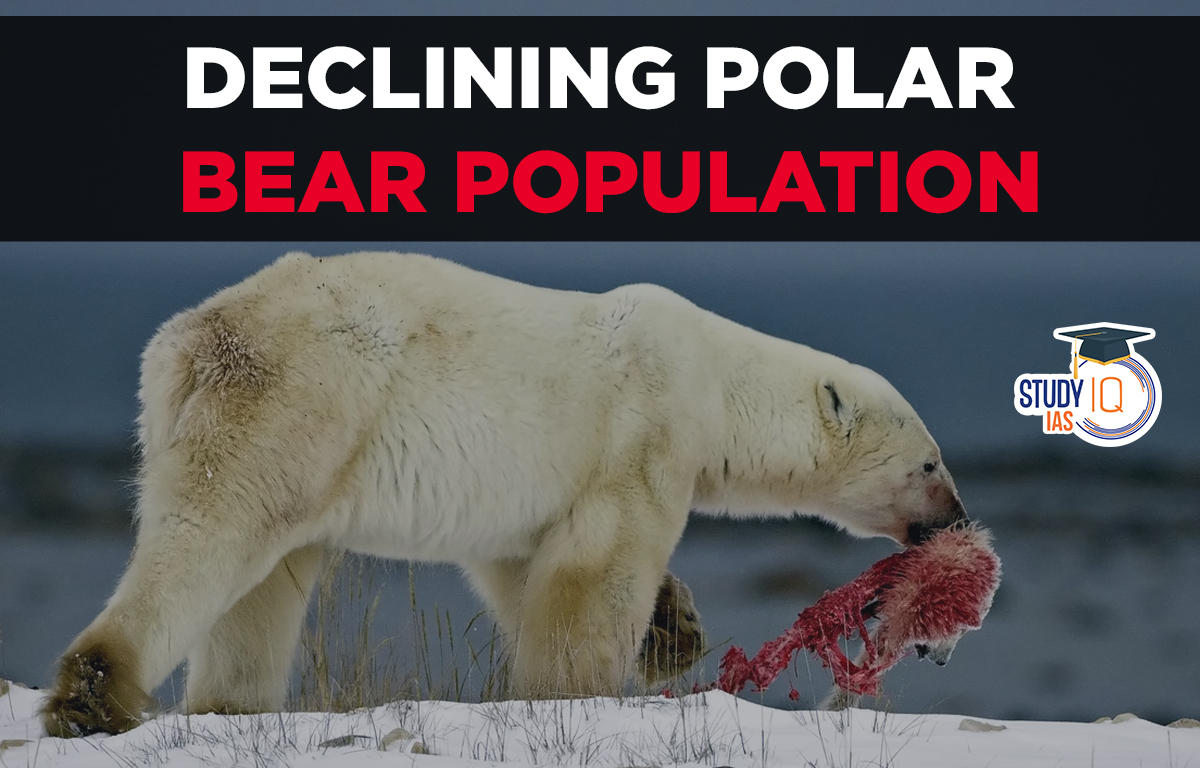Table of Contents
About Polar Bear
- Polar bears are the planet’s biggest land-based carnivores – although they actually spend most of their lives around water and ice.
- Distribution:
- Polar bears are restricted to icy Arctic region where temperature falls as low as –50°C.
- They are found in the frozen wilds of the Arctic, in Canada, Alaska (US), Greenland, Russia and Norway.
- Over forty percent of polar bears live in the north of Canada.
- Polar bears are not found in Antarctica. Their absence is mainly attributed to the evolution, location and climate.
- Ecological significance:
- The polar bear is the apex predator within its range, and is a keystone species for the Arctic.
- The big kills made by them serve as a food resource for scavengers like Arctic foxes and Arctic birds.
- Polar bear predation regulates the Arctic seal population, which in turn balances the food chain and health of the ecosystem.
- Polar bears are seen as the indicator species of the pristine Arctic environment.
- Protection status:
- IUCN Red list: Vulnerable
- CITES: Appendix II

Key Highlights of the Polar Bear Population Survey
- Declining Population:
- Western Hudson Bay currently has 618 polar bears, down from 842 in 2016 and the region witnessed a drop of around 50% in the population of polar bears since the 1980s.
- An earlier study published in Nature Climate Change in 2020 warned that polar bears will be wiped out by the end of the century.
- Impact of Climate Change on Polar Bears:
- Habitat loss: With rising temperatures, the Arctic sea ice is shrinking at a rapid pace, which is crucial to polar bears’ survival as they use it not only to hunt seals — their chief food — but also for travelling, mating and resting.
- Body deterioration: Due to global warming, the Arctic sea ice is breaking earlier in summer and refreezing later in winter, due to which polar bears get less time to hunt and have to stay hungry for longer and travel greater distances, resulting in body deterioration and a drop in the average weight of adult bears.
- Fewer cubs: Unhealthy bears can mean lower reproduction rates, higher cub mortality – and eventually, local extinction.
- Collapse of dens: Unusually warm weather in winter can cause the collapse of dens that females build to birth and protect their young.

Impacts of Declining Polar Bear Population
- If polar bears aren’t able to hunt animals like seals due to shrinking ice, it can severely impact the food chain and health of the ecosystem.
- Once polar bears can’t find seals to eat, they would quickly move to kill and survive on other creatures in the Arctic region. This would threaten the existence of species like the Arctic fox or the walrus.
- Moreover, it might also cause the overpopulation of seals, which could endanger the existence of crustaceans and fish that are an important food source for local human populations as well as other Arctic wildlife.





















 WhatsApp
WhatsApp